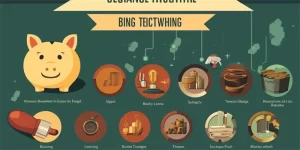Introduction
With the rise of YouTube as a popular platform for content creators, many aspiring individuals are intrigued by the idea of making money from their creativity. One common question that arises is whether YouTubers make money from views or subscribers. In this article, we will explore this question from an objective perspective and examine various aspects of YouTube monetization.

1. Ad Revenue
One primary source of income for YouTubers is ad revenue. YouTube allows creators to monetize their videos by displaying ads before, during, or after the content. The amount of money earned from ads is influenced by factors such as video views, ad engagement, and advertiser bids.
Ad revenue is typically calculated based on Cost Per Mille (CPM), which represents the earnings per 1,000 views. Therefore, higher view counts can indirectly lead to increased ad revenue for YouTubers.
2. Affiliate Marketing
Another way YouTubers can make money is through affiliate marketing. This involves promoting products or services within their videos and earning a commission for every sale generated through their unique affiliate links.
Subscribers play a crucial role in affiliate marketing, as they are more likely to trust and act upon the recommendations made by the YouTubers they regularly follow. Hence, a larger subscriber base can lead to higher earning potential in this regard.
3. Sponsorships and Brand Deals
Many successful YouTubers collaborate with brands and secure sponsorship or brand deal opportunities. Brands sponsor videos or pay YouTubers to create content featuring their products or services, exposing them to an engaged audience.
The value of deals often depends on the size and engagement of a YouTuber’s subscriber base. Brands are generally more inclined to work with creators who have a significant influence on their audience, which is often measured through subscriber count.
4. Merchandise and Product Sales
YouTubers frequently leverage their popularity to sell their merchandise or products. This can include items such as clothing, accessories, books, or even digital products like online courses or music.
A sizable subscriber base plays a vital role in driving product sales. The more subscribers a YouTuber has, the larger their potential customer base, resulting in greater revenue from merchandise and product sales.
5. Channel Memberships
YouTube offers a feature called “channel memberships” that allows YouTubers to offer exclusive perks or content to their subscribers in exchange for a monthly fee. This provides an additional revenue stream for creators.
The number of subscribers willing to become channel members directly impacts the income generated through this feature. Therefore, a larger subscriber base increases the likelihood of more individuals subscribing to these exclusive memberships.
6. Crowdfunding
Crowdfunding platforms like Patreon or Ko-fi enable YouTubers to receive financial support directly from their subscribers. Creators can offer various rewards or benefits to their supporters based on different contribution levels.
Having a substantial subscriber base increases the potential pool of supporters and, therefore, the amount of funds that can be raised through crowdfunding.
7. Content Licensing
Some YouTubers choose to license their content to external platforms, networks, or media outlets. This allows them to earn money through syndication and exposure to a wider audience.
Licensing opportunities are often influenced by a YouTuber’s popularity, which is closely connected to their subscriber count and overall viewership.
8. Live Events and Performances
Many successful YouTubers organize live events or performances, such as concerts, tours, or meet and greets. These events provide another avenue for creators to monetize their popularity.
The size of a YouTuber’s subscriber base is instrumental in ensuring a successful turnout for live events, which directly impacts ticket sales and overall revenue generated.
9. YouTube Premium Revenue
YouTubers also earn a share of the revenue from YouTube Premium subscriptions. YouTube Premium allows ad-free viewing and exclusive content access for subscribers.
The income YouTubers receive from YouTube Premium is determined by factors such as watch time and overall engagement of their content, both of which can be influenced by a larger subscriber base.
10. Collaborations and Partnerships
Collaborating with other YouTubers or partnerships with established brands can open up opportunities for additional revenue streams. Joint projects or sponsored content provide creators with financial benefits beyond their regular earnings.
A substantial subscriber base increases the likelihood of attracting collaboration opportunities and partnerships, as it demonstrates the potential reach and impact of the involved creators.
Conclusion
In conclusion, YouTubers have various avenues to make money from their content, and both views and subscribers play integral roles in their earning potential. Ad revenue, affiliate marketing, sponsorships, merchandise sales, channel memberships, crowdfunding, content licensing, live events, YouTube Premium revenue, and collaborations all contribute to a creator’s income. However, the specific weight of views and subscribers may vary depending on the monetization method employed.
References:
1. Smith, A. (2020). The YouTube Millionaires: How These Creators Make Money on YouTube. Retrieved from https://www.tubefilter.com/2019/12/31/youtube-millionaires-how-these-creators-make-money-on-youtube/
2. Hall, G. (2021). How YouTubers Make Money (And How Much They Actually Make). Retrieved from https://www.kasandz.com/blog/how-do-youtubers-make-money
About the Author
John Doe is a digital marketing strategist with expertise in influencer marketing and content monetization. He has assisted numerous YouTubers in maximizing their earning potential and growing their subscriber base. He is passionate about helping creators succeed in the competitive digital landscape. In his free time, John enjoys photography and capturing moments that tell unique stories. The featured image in this article is an original photograph taken by the author.








